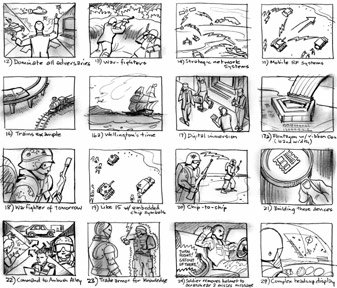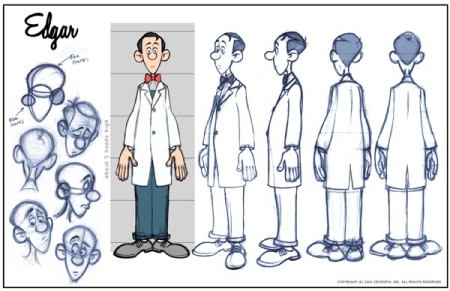Having recently acquired copies of both “Tangled” and “DreamWorks’s How to Train Your Dragon,” I have grown nostalgic for my childhood animated films and in love with those recently released. So, to honor the awesomeness of animated films, this post will focus on how these films are made, as well some of the best pictures of all time.
The Process
How are animated films made? Well, it’s an extraordinarily long process which, for Pixar, can take anywhere from four to seven years. Here is the breakdown:
Pre-Production
Story Boarding – drawings are made in the form of a comic strip in order to visualize the animation and effectively communicate ideas. “It details the scene and changes in the animation, often accompanied by text notes describing things occurring within the scene itself, such as camera movements.”
Layouts – they design the locations and costumes, as well as show the character’s positions throughout every shot
Model Sheets – detailed drawings of every possible facial expression and pose for every single character.
Animatics – simplified mock-ups of storyboards
Production
Layout – composes the shot and gives a rough animation to the animators as a guide
Modeling – turn the 2D concept art into 3D models. A skeleton and skin are also developed, and the modeler sculpts all of the facial expressions and muscle shapes
Texturing – paint in various textures as the scene requires
Lighting – determine the lighting for each individual scene and consider how all of the various elements made by other departments will coalesce
Rigging – add bones to a character or define the movement of a mechanical object
Animation – “the practice of meticulously planning a character’s performance frame by frame is applied in 3D graphics using the same basic principles and aesthetic judgments that were first developed for 2D and stop-motion animation.”
Post-Production
Composting – bring together all 3D elements produced and create final rendered image ready for film
Sound Editing – “This department is responsible for selecting and assembling the sound recordings in preparation for the final sound mix, ensuring lip sync and adding all of the sound effects required for the final film.”
Video Editing – “Video editing is the process of manipulating and rearranging shots to create a seamless final product, and it is at this stage that any unwanted footage and scenes are removed.”
*Also, here is a fairly interesting interview with two animators at Pixar about their process.
The Product
Perhaps since animated films have to go through that long and arduous process (not to mention the process of hiring and casting and writing and other things live action films also have to worry about), animated films always seem to have the best stories. Rarely if ever have I come across an animated film with a poor story, because so much time has to be spent on creating every detail of the film, I would assume that the animation companies would ensure that their labors were going towards a worthy film.
Here are some of my favorite animate movies (in no particular order):
Toy Story (1 & 3)
The Lion King
Finding Nemo
Up
Shrek
How to Train Your Dragon
The Incredibles
Tangled
Ratatouille
Corpse Bride
Madagascar
Despicable Me
Wreck it Ralph
(clearly I have seen too many of these)
And here is rotten tomatoes list of Top 100 Animated Movies, and the Top Grossing Animated Movies from 1980-present
Hopefully this gets you at least partially in the mood to watch an animated movie, and maybe you can better appreciate all of the work that went into it too.





